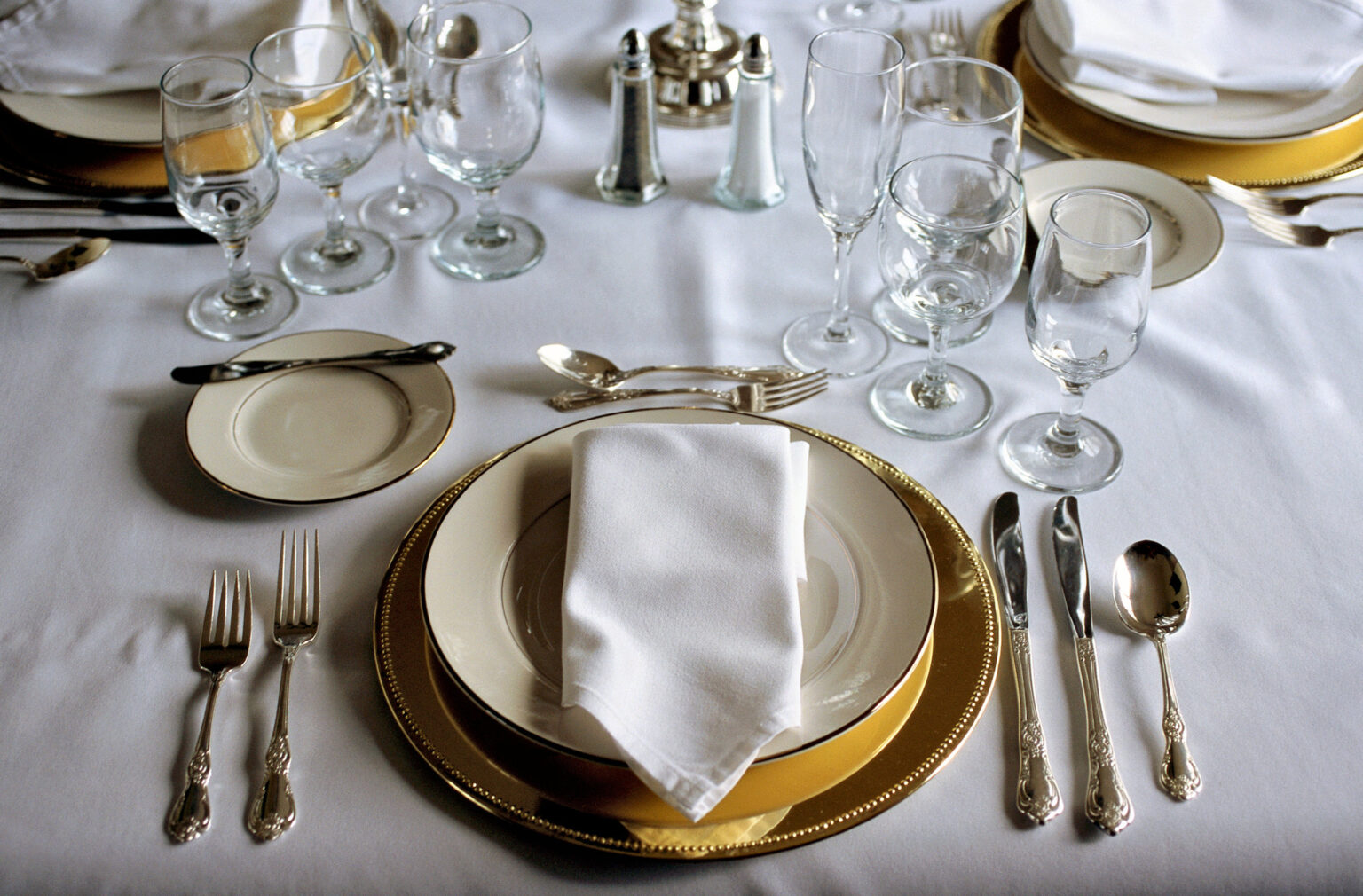Growing up, my family’s dining room table was governed by a set of strict rules that shaped our mealtime etiquette.
- Wash your hands before sitting at the table.
- Say grace before eating.
- Keep your elbows off the table.
- Use the proper utensils for each course.
- Chew with your mouth closed.
- Do not take food from someone else’s plate.
- Politely excuse yourself before leaving the table.
In today’s fast-paced world, the tradition of gathering around the family table for meals is diminishing. Many working families find it challenging to coordinate meal times, often opting to eat individually or dine out instead. However, regardless of whether meals occur at the family table or in a restaurant, maintaining certain table etiquettes remains important.
Even in a more relaxed dining atmosphere outside the home, basic manners should not be neglected. It’s common to observe diners in restaurants chewing loudly with their mouths open—a reminder that, while the settings may have evolved, the fundamentals of good table manners are still relevant. These etiquettes not only enhance the dining experience but also reflect how we present ourselves in social settings.
Here’s a complete list of table etiquette…
Table etiquette, often referred to as dining etiquette, involves a set of rules and behaviors that are accepted as polite and proper while dining. Good table manners are essential for making a favorable impression at both social and professional gatherings. Here’s a more detailed exploration of key aspects of table etiquette:
1. Setting the Table
- Plates: Set the dinner plate in the center of the place setting. The bread plate goes to the left.
- Silverware: Forks are placed to the left of the plate, and knives and spoons to the right. Utensils are used from the outside in, so the ones furthest from the plate are used first.
- Glasses: Drinking glasses are positioned above and to the right of the dinner plate; water glasses directly above the knife and wine or other beverage glasses slightly to the right.
2. Using Utensils
- American Style: Hold your fork in your right hand when cutting with a knife, then switch the fork to your left hand to eat, tines facing up.
- European Style: Hold your fork in your left hand and your knife in the right hand throughout the meal, tines facing down.
- Resting Utensils: When pausing during the meal, rest your fork and knife on your plate in a crossed or parallel position.
3. During the Meal
- Napkin Use: Place your napkin on your lap as soon as you sit down. Use it to gently dab your mouth as needed. When the meal is over, loosely fold it next to your plate.
- Serving Yourself: Pass dishes to the right (counter-clockwise). Use serving utensils to serve yourself and avoid touching the food with your hands.
- Pacing: Try to keep pace with others at the table to ensure that no one is left eating alone.
4. Conversation and Conduct
- Talk Appropriately: Engage in light, pleasant conversation. Avoid controversial topics or overly personal details.
- Attention to Surroundings: Be mindful of your volume and avoid speaking with food in your mouth.
- Excusing Yourself: If you need to leave the table, do so between courses if possible. Simply say, “Excuse me,” and leave your napkin on your chair.
5. Finishing the Meal
- Utensil Placement: Indicate you are finished by placing your knife and fork together at the 4:20 position on your plate. Handles should be at the bottom-right of the plate, tines, and blade facing inward.
- Thanking the Host: Always thank the host or the person who prepared the meal. If at a restaurant, it’s polite to thank the staff.
6. Special Considerations
- Allergies and Dietary Restrictions: Inform your host of any dietary restrictions ahead of time. If something you cannot eat is served, simply leave it on your plate without comment.
- Alcohol: Observe the host for cues. Do not begin drinking until after a toast is made if one is proposed.
Mastering these aspects of table etiquette not only enhances your dining experience but also ensures that you contribute to a pleasant atmosphere for all diners involved.
